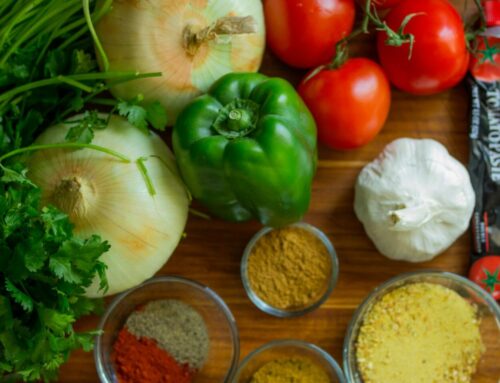Frozen food twist shoppers can’t resist
In the last few years, we have seen many new food trends taking center stage and experiencing accelerated growth following COVID-19. Restaurant and grocery delivery, healthy meal plans, do it yourself cooking kits and more is making the food industry almost unrecognizable from the generations before us. Food Manufacture magazine reported in February 2019 that 2018 was one of the biggest years for frozen food and showed that there was a 4% year on year increase in demand (Dinkovski, 2019), followed by a 94% surge in Mid-March 2020 (AFFI, 2020). Shopping behaviors changed post-pandemic with 57% of shoppers still purchasing more frozen foods, 58% purchasing different kinds of frozen foods and 57% purchasing different brands than they did pre-pandemic. With online frozen sales up by 75%, current studies show that today’s frozen foods rival fresh (Browne, 2021).
Now that we are distancing ourselves from COVID, both physically, mentally, and figuratively, what is the driver behind the continuous climb in the frozen food market?
Time saver
Purchasing frozen foods online not only saves time previously spent pushing a cart aimlessly around the grocery store, but also time spent preparing the food. Now we can choose the cuisine, portions, and preparedness we want all with a click of a button. The options are quickly becoming endless with more frozen food delivery services popping up daily. Whether you want to pop your meal in the oven, ready to serve, or have all the ingredients prepped and waiting for you, as if your order came with an imaginary sue-chef to do all the tedious parts of cooking, leaving the magical finishing touches to you, there is something for everyone.
More food options
A large driver of the growth in frozen foods is cooking fatigue. People are sick of cooking the same meals week after week. They want to explore different cuisines and innovative flavors. Gone are the days of eating to fill your tummy and provide your body the nutrients it needs to survive, we want to experiment with new foods, different cultures and traditions. With more people traveling the world and trying local eateries, their expanded palettes crave the spontaneity of a foreign cuisine. Eating has become an experience, an event, that many look forward to every meal. Sure, we could test out our cooking skills by shopping down the ethnic food aisle in the grocery store, but where do we begin when cooking this cuisine and maintaining its authenticity. We want the food and/or the tools to cook it delivered to our door.
Healthy Options
The health craze is all the rage these days and for good reason. With sophisticated data and experienced health professionals, all signs point to “you are what you eat” being more than just an old wife’s tale. Frozen food has managed to take a piece of this pie as well, with many brands like Daily Harvest, Paleo on the Go and Magic kitchen offering preservative-free, plant-based, gluten-free, and low-sodium options, not to mention portion control. Older millennial shoppers represent 48% of the core consumer audience and more than half believe that frozen food is equal to or better for you than fresh food (Durrani, 2022). Whatever your health preferences are, frozen food suppliers are now giving you the tools to personalize your nutrition to help meet your goals.
Certainty
Around the country we are seeing grocery store shelves empty and prices skyrocketing. While the future and our economy hang in the balance, frozen staples offer certainty in uncertain times. With their convenience, affordability and long shelf life, frozen food is becoming more reliable as an alternative for traditional grocery store shoppers.
Convenience
Depending on where you live and your proximity to a grocery store, this factor could be huge for you. Nearly 19 million people (6.2% of the nation’s total population) — had limited access to a supermarket or grocery store according to the USDA’s most recent food access research report, published in 2017 (Rhone et al., 2017). Another survey found that more than 90% of shoppers are willing to travel no more than 20 minutes from home to make routine purchases. For more frequent purchases, that distance shrinks to 10 minutes. And for heavily shopped categories, the preferred distance gets even shorter, maybe even delivery some might add. Convenience is king.
Learn more about cold chain solutions to refrigerated and frozen food transportation and storage.
Dinkovski, N. (2019, February 19). Frozen Food’s growth fuelled by consumer trends: BFFF boss. foodmanufacture.co.uk. Retrieved August 2, 2022, from https://www.foodmanufacture.co.uk/Article/2019/02/19/Frozen-food-industry-set-for-further-growth-trade-body-boss
New data suggests frozen food surge will have longer shelf life – affi – american Frozen Food Institute. AFFI. (2020, November 11). Retrieved August 2, 2022, from https://affi.org/new-data-suggests-frozen-food-surge-will-have-longer-shelf-life/
Browne, M. (2021, February 23). Frozen food sales up 21% in 2020 as Covid alters shopping and eating behaviors. Supermarket News. Retrieved August 2, 2022, from https://www.supermarketnews.com/consumer-trends/frozen-food-sales-21-2020-covid-alters-shopping-and-eating-behaviors
Durrani, A. (2022, January 12). Frozen Heats up: Millennials’ affinity for Frozen Foods – affi – American Frozen Food Institute. AFFI. Retrieved August 2, 2022, from https://affi.org/frozen-heats-up-millennials-affinity-for-frozen-foods/
Rhone, A., Ploeg, M. V., Dicken, C., Williams, R., & Breneman, V. (2017, January). Low-income and low-supermarket-access census tracts, 2010-2015 – USDA ERS. Low-Income and Low-Supermarket-Access Census Tracts, 2010-2015. Retrieved August 2, 2022, from https://www.ers.usda.gov/webdocs/publications/82101/eib-165.pdf?v=3395.3
